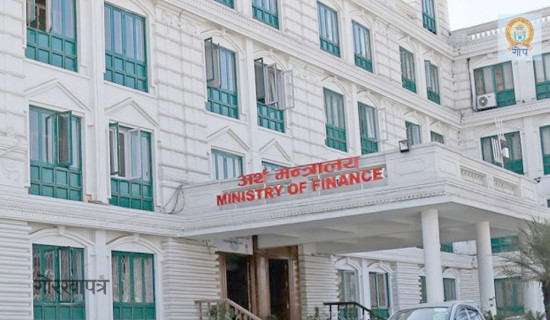- Monday, 5 January 2026
Dampening Dashain
Aashish Mishra
Ask anyone over a certain age and they will tell you that in the past, Dashain used to be more than a religious festival. It used to be an occasion to relax and have fun. People would buy new clothes (often the first and only time in the year they would do so), gather with family members, fly kites, build and play swings, etc. It was a holy fortnight, yes, but the holiday children and adults got for the festival also made it a time to take a break from life and give the body and the mind a chance to recharge.
Few would argue that Dashain still holds that charm. Whether this change is good or bad can be up for debate but everyone agrees that Dashain and the aura around it have changed. Not many children fly kites, for instance. Swings have almost completely disappeared.
Communities do not gather and celebrate collectively like they used to and everything seems to have got more expensive and commercialised (do not know if those two things are related).
Not everyone laments this change but if social media is anything to go by, a significant portion of the Nepali population does. And it is quick to place blame on the supposed disinterest of the youth and their preference for technology (many call out smartphones and the internet) over culture. But such assertions gloss over several key social factors which have contributed to changing the nature and essence of Dashain over the past few decades.
First, the new generations are not as free during Dashain as their parents and grandparents were.
They do not get as many days off as their predecessors did and are expected to use their holidays to catch up on work rather than spend time with their families. Today’s hectic lifestyle does not allow people to fully enjoy festivals like Dashain and Tihar even if they want to.
Young kids too are burdened with school work. Children are the ones who add life to festivals but during Dashain, they are kept away from the festivities by so-called Dashain homework. We complain of youngsters not flying kites anymore but do not see the load they have been buried under by their schools. And the ultimate irony is that such assignments do not do anything to improve students’ academic performance. Several studies carried out in China have shown that the quality of work pupils produce actually decreases during long festivals.
That is because festivals are not a time for studying. There is noise, there are gatherings, there are celebrations all around and children are understandably distracted by the fun happening around them.
Also, the homework teachers give holds little to no relevance to the occasion. Children travel for festivals, interact with members of their family and community, play games and participate in rituals.
At such times, assignments related to geography, cultural studies, family dynamics, relationship building and the like would be more suitable than those related to maths problems and chemical reactions. If schools and teachers insist on giving homework then they should at least make the effort to provide homework that is appropriate for the situation and that the kids may actually be interested in doing.
Moreover, children are not machines. They need rest. They need to collect themselves and recharge. Festival holidays should provide them with an opportunity to do that.
After studying every day for six or seven hours for six to seven months, students should not be forced to do the same in the six or seven days off they get to be with their families and enjoy themselves.
In fact, the aforementioned Chinese studies show that the kids actually perform better in school if they are allowed to have workless long holidays. A gap in their daily schedule renews their enthusiasm and unclutters their mind.
If we want a livelier Dashain, we must seek to free our children from the shackles of irrelevant, unnecessary and burdensome “Dashain homework.”
Another thing that has made Dashain less soulful is out-migration, not just from villages to cities but from villages to other countries.
Many Nepalis live abroad for work or study and cannot come home for the festivals. This means many families have to celebrate one of their most important festivals without some of their most important members. This continues to dampen Dashain for many of us.
Lastly, inflation has also been dealing severe blows to Dashain in recent years.
People want to celebrate the festival but they are increasingly not able to afford it. Everything is so expensive.
So, next time we find Dashain bland, let us seek to understand why rather than just blaming phones and computers.
















